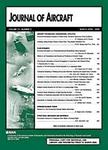版权所有:内蒙古大学图书馆 技术提供:维普资讯• 智图
内蒙古自治区呼和浩特市赛罕区大学西街235号 邮编: 010021

作者机构:Iowa State Univ Dept Aerosp Engn 537 Bissel Rd Ames IA 50011 USA Reykjavik Univ Engn Optimizat & Modeling Ctr Sch Sci & Engn Menntavegur 1 IS-102 Reykjavik Iceland
出 版 物:《JOURNAL OF AIRCRAFT》 (飞机杂志)
年 卷 期:2020年第57卷第3期
页 面:388-398页
核心收录:
学科分类:08[工学] 0825[工学-航空宇航科学与技术]
基 金:Icelandic Centre for Research (RANNIS)
主 题:Aerodynamic Shape Optimization Morphing Airfoil CFD Simulation Surrogate Model Reynolds Averaged Navier Stokes Multi Objective Evolutionary Algorithms High Performance Computing Multi Objective Genetic Algorithm Sequential Quadratic Programming Lift Coefficient
摘 要:Exploration of design tradeoffs for aerodynamic surfaces requires solving of multi-objective optimization (MOO) problems. The major bottleneck here is the time-consuming evaluations of the computational fluid dynamics (CFD) model used to capture the nonlinear physics involved in designing aerodynamic surfaces. This, in conjunction with a large number of simulations necessary to yield a set of designs representing the best possible tradeoffs between conflicting objectives (referred to as a Pareto front), makes CFD-driven MOO very challenging. This paper presents a computationally efficient methodology aimed at expediting the MOO process for aerodynamic design problems. The extreme points of the Pareto front are obtained quickly using single-objective optimizations. Starting from these extreme points, identification of an initial set of Pareto-optimal designs is carried out using a sequential domain patching algorithm. Refinement of the Pareto front, originally obtained at the level of the low-fidelity CFD model, is carried out using local response surface approximations and adaptive corrections. The proposed algorithm is validated using a few multi-objective analytical problems and an aerodynamic problem involving MOO of two-dimensional transonic airfoil shapes where the figures of interest are the drag and pitching moment coefficients. A multifidelity model is constructed using CFD model and control points parameterizing the shape of the airfoil. The results demonstrate that an entire or a part of the Pareto front can be obtained at a low cost when considering up to eight design variables.